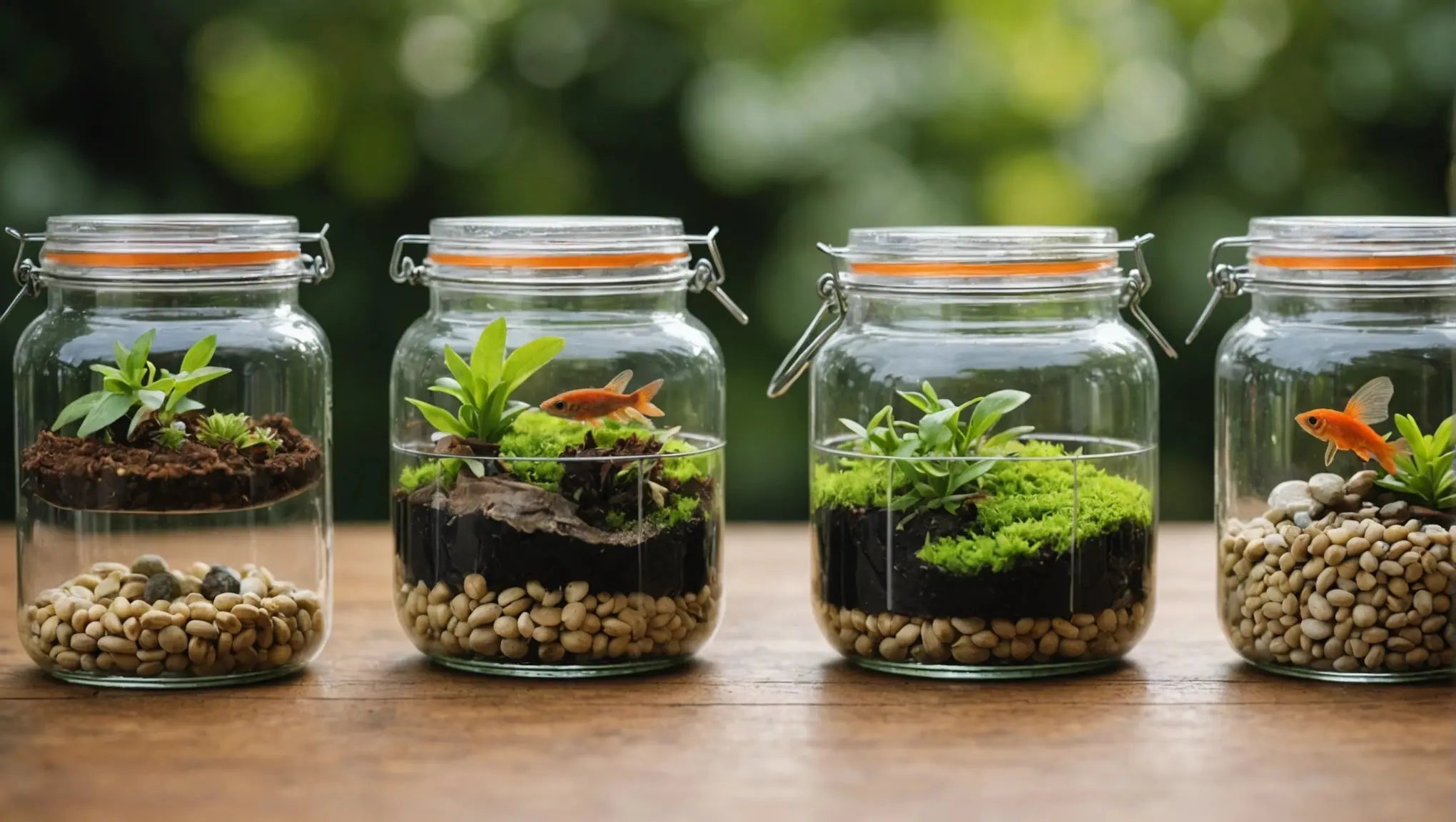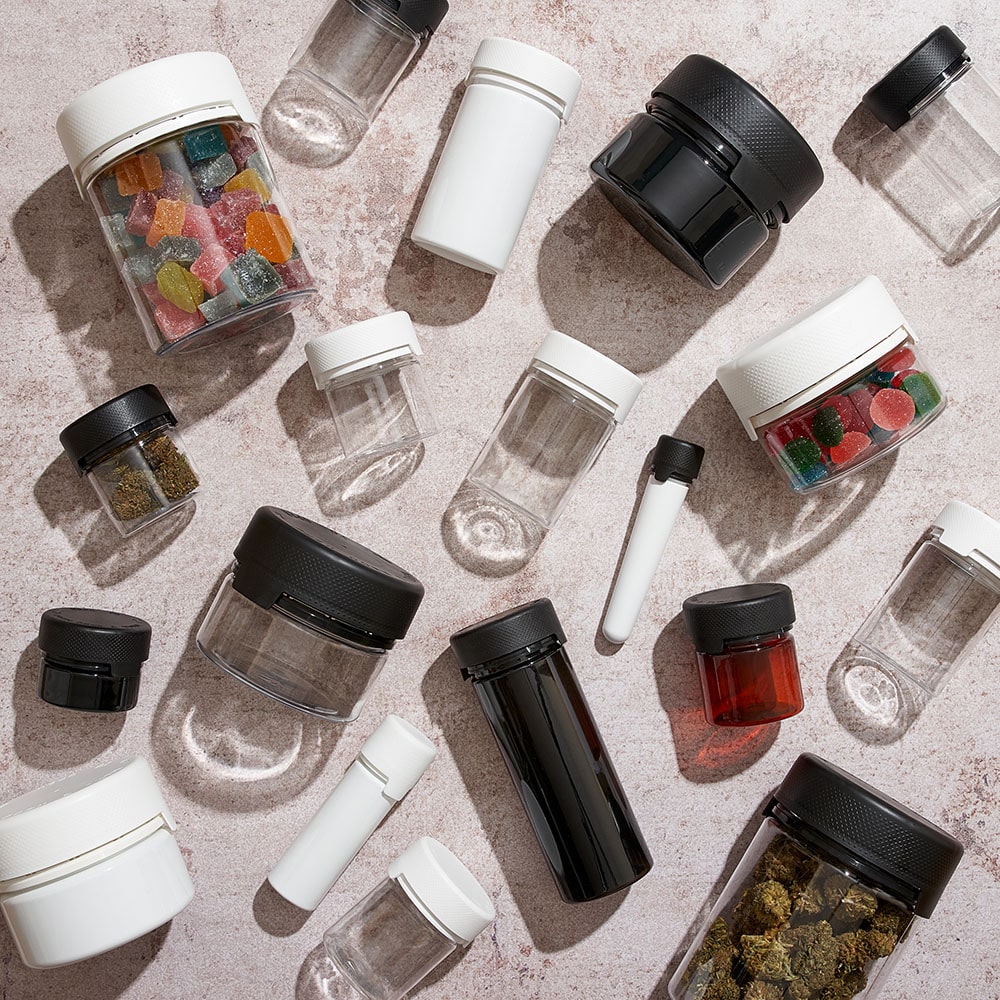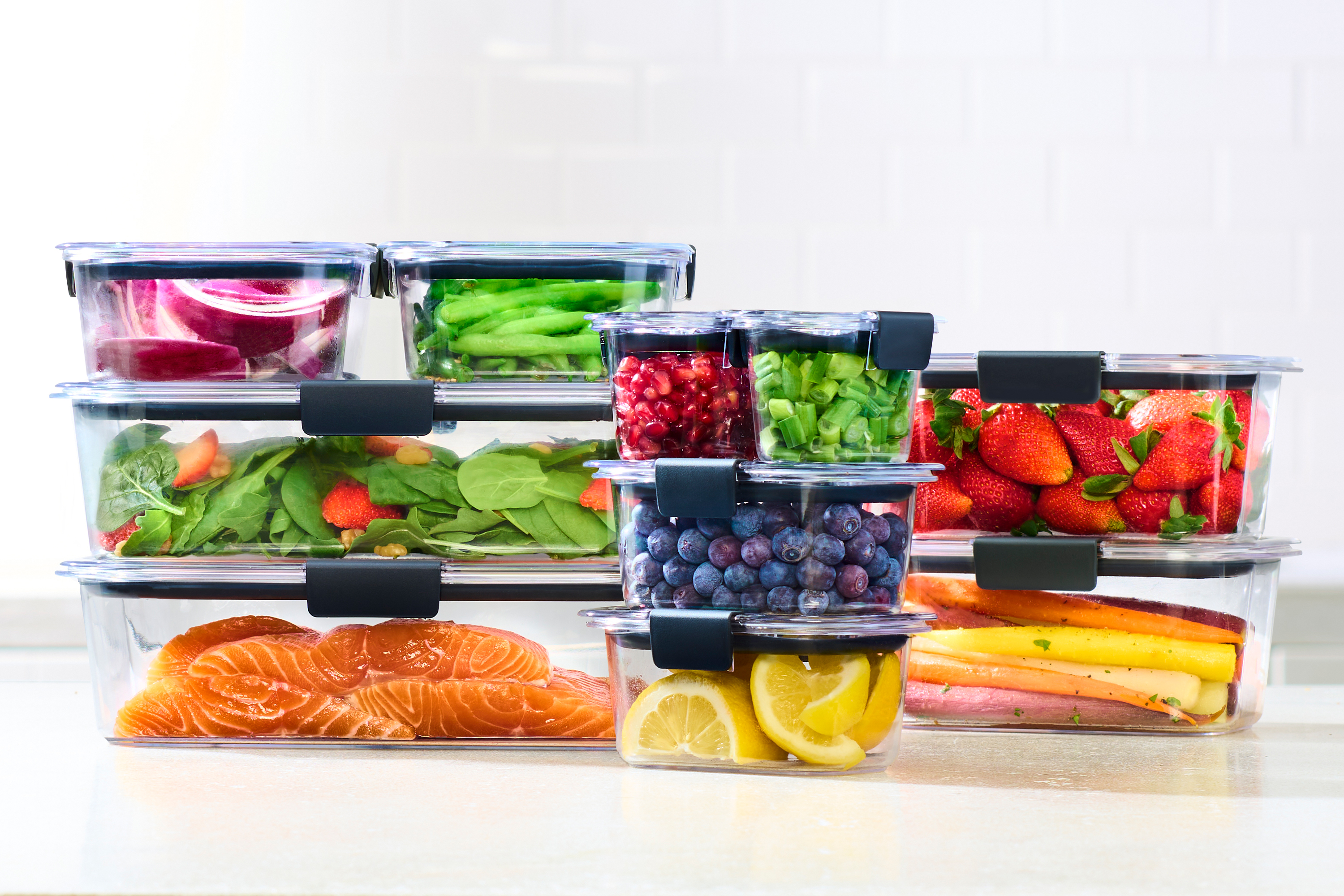How to Choose the Perfect Food Storage Containers: A Comprehensive Guide
Selecting the right food storage containers can be tricky. The choices seem endless.
Finding the perfect containers helps keep food fresh, saves space, and reduces waste. With so many options available, it’s easy to feel overwhelmed. This guide will simplify the process for you. It will highlight key factors to consider, such as material, size, and functionality.
Whether you need containers for meal prep or pantry organization, making the right choice can make your life easier. So, let’s explore how to choose food storage containers that meet your needs and fit your lifestyle.
Types Of Food Storage Containers
Choosing the right food storage containers can make your kitchen more organized. There are various types of containers available. Each type has its own benefits and drawbacks. Understanding these can help you make a better choice. Let’s explore the different types of food storage containers.
Plastic Containers
Plastic containers are lightweight and affordable. They come in various shapes and sizes. They are often stackable, saving space in your kitchen. Many plastic containers are microwave and dishwasher safe. But not all plastic is the same. Look for BPA-free labels. BPA can be harmful to health. Plastic containers can absorb food odors over time. They may also stain with certain foods like tomato sauce.
Glass Containers
Glass containers are durable and long-lasting. They do not absorb odors or stains. Glass is microwave, oven, and dishwasher safe. This makes them very versatile. Glass containers are heavier than plastic ones. They can break if dropped. They are also more expensive. But their longevity can make up for the cost. Many glass containers come with airtight lids. This helps keep food fresh for longer.
Stainless Steel Containers
Stainless steel containers are very durable. They do not break easily. They are also non-toxic and do not absorb odors. Stainless steel is resistant to rust and corrosion. These containers are lightweight compared to glass. They are not microwave safe. But they are dishwasher safe. Stainless steel containers are usually more expensive. But they are a good investment for long-term use.
Material Safety
When choosing the perfect food storage containers, material safety is essential. Safe materials prevent harmful chemicals from leaching into your food. Your health should always be a priority, and selecting the right container material is a critical step.
Bpa-free Options
Many plastic containers may contain BPA, a harmful chemical. BPA exposure can lead to health problems over time. To avoid this, look for containers labeled “BPA-Free.” This label means the plastic does not contain the harmful substance. Glass and stainless steel are also good BPA-free options.
Non-toxic Materials
Non-toxic materials are safer for food storage. Glass containers are an excellent choice. They do not leach chemicals and are easy to clean. Stainless steel is another non-toxic option. It’s durable and does not react with acidic foods.
Silicone is a flexible, non-toxic material. It is safe for both the fridge and the oven. Ensure any silicone you choose is food-grade quality. This guarantees it is free from harmful substances.
Durability And Longevity
When choosing food storage containers, durability and longevity are crucial factors. These attributes ensure your containers withstand daily use and last for years. Let’s dive into the specifics of what makes a container durable and long-lasting.
Impact Resistance
Impact resistance is a key feature for food storage containers. Containers with high impact resistance can survive drops and bumps. This is important in busy kitchens where accidents happen. Look for materials like thick glass or high-quality plastic. These materials can handle impacts better than thinner ones.
Lifespan Considerations
Consider the lifespan of the containers you choose. Longevity depends on the material and construction quality. Glass containers often last longer than plastic ones. They resist staining and do not absorb odors. Plastic containers can degrade over time and may need replacing.
Check for signs of wear and tear. Cracks, warping, or discoloration indicate it is time to replace your container. Investing in high-quality containers can save money in the long run. They provide better performance and need fewer replacements.

Size And Shape
Choosing the right food storage containers can be challenging. The size and shape of your containers play a crucial role. They impact how well you can store food and save space. Let’s explore the key aspects of size and shape.
Space Efficiency
Space efficiency is vital in any kitchen. Select containers that nest inside each other. This feature saves space when not in use. Square or rectangular containers fit better in cabinets. They use less space compared to round ones. Also, stackable containers help maximize storage.
Portion Control
Portion control is easier with the right container sizes. Use small containers for snacks and large ones for meals. This helps manage food portions better. Transparent containers allow you to see the contents easily. This can help avoid overfilling. Using the right size can reduce food waste too.
Seal And Leak-proof Features
Choosing the right food storage containers is crucial. One important factor is their seal and leak-proof features. These features prevent spills and keep food fresh for longer. Let’s explore the types of seals and leak-proof designs available.
Types Of Seals
There are different types of seals in food storage containers. Gasket seals are common. They use a rubber or silicone lining. This lining creates an airtight closure. Snap-lock seals are another option. These have latches that clip firmly onto the container. They ensure a tight fit. Screw-top seals are also popular. They twist on and off easily. They offer a secure closure.
Leak-proof Designs
Leak-proof designs are essential. They prevent spills and messes. Many containers have double-layered lids. These add an extra layer of protection. Some lids have built-in valves. These valves release excess air. This keeps the contents fresh. Stackable designs are also useful. They save space and prevent leaks. Look for containers with reinforced corners. These provide extra strength and durability.
Microwave And Freezer Compatibility
Choosing the right food storage containers can be challenging. One critical factor is microwave and freezer compatibility. Not all containers are designed to handle extreme temperatures. Using the wrong container can result in damaged food, ruined containers, or even safety hazards.
Microwave-safe Options
When selecting containers for microwaving, look for those labeled as microwave-safe. These containers are made from materials that can withstand microwave heat without melting or releasing harmful chemicals.
- Glass containers: Ideal for microwaving. They do not leach chemicals into your food.
- BPA-free plastic: Safer for microwaving. Ensure they have a microwave-safe symbol.
- Silicone containers: Flexible and heat-resistant. Great for reheating food.
Always remove lids or use vented lids when microwaving. This prevents pressure build-up and ensures even heating.
Freezer-safe Options
For freezing, containers must be freezer-safe. These containers can withstand cold temperatures without cracking or breaking.
- Glass containers: Suitable for freezing. Choose ones with thick walls to avoid breakage.
- Plastic containers: Look for those labeled as freezer-safe. They are less likely to become brittle.
- Silicone containers: Flexible and durable. Perfect for freezing smaller portions.
Avoid overfilling containers before freezing. Liquids expand when frozen. Leave some space to prevent spills.
Ease Of Cleaning
Choosing the right food storage containers involves considering several factors. One key aspect is the ease of cleaning. Clean containers help keep food fresh and prevent contamination. They also save you time and effort during cleanup. Let’s explore how to make cleaning your containers a breeze.
Dishwasher-safe
Many people prefer dishwasher-safe containers. They save time and ensure thorough cleaning. Look for containers labeled as dishwasher-safe. This guarantees they can withstand the heat and detergents used in dishwashers. Glass and certain types of plastic are often dishwasher-safe.
Dishwasher-safe containers also reduce the risk of lingering odors. They get a more intense wash compared to hand washing. Make sure to place them on the top rack. This protects them from the high heat at the bottom of the dishwasher.
Hand-washing Tips
Some containers are not dishwasher-friendly. They may require hand washing. Use warm, soapy water and a soft sponge for these containers. Avoid using abrasive materials. These can scratch the surface and create places for bacteria to hide.
Dry the containers thoroughly after washing. This prevents mold and mildew. For stubborn stains, a mixture of baking soda and water works well. Let it sit for a few minutes before scrubbing. Rinse thoroughly to remove all soap and residue.

Cost And Budget
Choosing the right food storage containers is important. It’s not just about keeping your food fresh. It also means staying within your budget. In this section, we will explore the cost and budget considerations. We’ll look at both affordable options and premium choices.
Affordable Options
Not everyone wants to spend a lot on food storage containers. Affordable options can still provide quality and durability. Here are some budget-friendly choices:
- Plastic Containers: These are the most common and inexpensive. They come in various sizes and shapes.
- Glass Containers: While slightly more expensive than plastic, they are still affordable. They are also better for the environment.
- Silicone Bags: These are reusable and great for saving space. They are also dishwasher safe.
Below is a table comparing these affordable options:
| Type | Price Range | Durability |
|---|---|---|
| Plastic Containers | $1 – $10 | Medium |
| Glass Containers | $5 – $15 | High |
| Silicone Bags | $8 – $20 | High |
Premium Choices
If you have a higher budget, premium choices offer extra features. They provide better durability and often come with warranties. Here are some premium options:
- Stainless Steel Containers: These are highly durable and long-lasting. They are also stain and odor-resistant.
- Vacuum-Sealed Containers: These keep food fresh for longer by removing air. They are great for storing bulk items.
- BPA-Free High-End Plastic: These containers offer better quality and longer life. They are also safe for food storage.
Below is a table comparing these premium options:
| Type | Price Range | Durability |
|---|---|---|
| Stainless Steel Containers | $15 – $50 | Very High |
| Vacuum-Sealed Containers | $20 – $60 | Very High |
| BPA-Free High-End Plastic | $10 – $30 | High |
Whether you choose affordable or premium options, always consider your specific needs and budget. This will help you make the best choice for your kitchen.
Environmental Impact
Choosing the right food storage containers can have a significant impact on the environment. Understanding the environmental implications can guide you towards making more sustainable choices.
Reusable Alternatives
Consider using reusable alternatives over single-use plastic containers. Reusable containers reduce waste and can be used for years.
- Glass containers: Durable and easy to clean.
- Silicone bags: Flexible and reusable.
- Stainless steel: Long-lasting and recyclable.
Switching to these options can significantly reduce your carbon footprint.
Eco-friendly Materials
Choose food storage containers made from eco-friendly materials. These materials are better for the planet and for your health.
| Material | Benefits |
|---|---|
| Bamboo | Biodegradable and renewable. |
| Glass | Recyclable and non-toxic. |
| Stainless steel | Durable and recyclable. |
Using these materials can help reduce plastic pollution.
Incorporating these practices in your daily life can lead to a more sustainable future.

Frequently Asked Questions
What Materials Are Best For Food Storage Containers?
Glass, stainless steel, and BPA-free plastic are ideal. Glass is non-toxic and durable. Stainless steel is lightweight and long-lasting. BPA-free plastic is affordable and versatile.
How Do You Choose The Right Size Container?
Consider your storage needs. Small containers are great for snacks. Medium ones work for leftovers. Large containers suit bulk storage.
Are Airtight Containers Necessary For Food Storage?
Yes, airtight containers are crucial. They keep food fresh longer. They prevent odors and moisture from affecting your food.
Can Food Storage Containers Go In The Microwave?
Most containers can. Look for microwave-safe labels. Avoid heating plastic to prevent chemical leaching. Glass and ceramic are safer options.
Conclusion
Choosing the perfect food storage containers doesn’t have to be hard. Consider material, size, and purpose. Opt for eco-friendly options when possible. Good containers keep your food fresh longer. This saves money and reduces waste. Always check for tight lids to prevent spills.
Remember, the right container can make a big difference in your kitchen. Happy storing!







